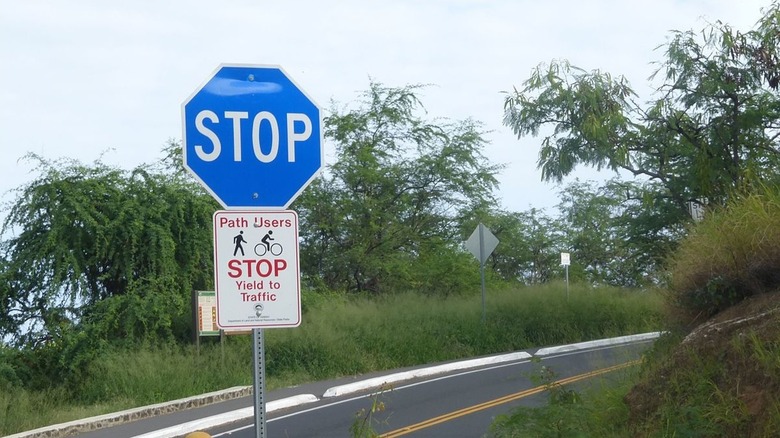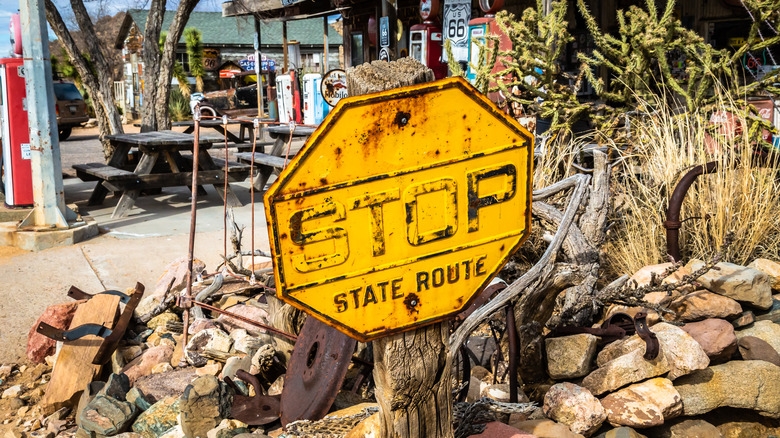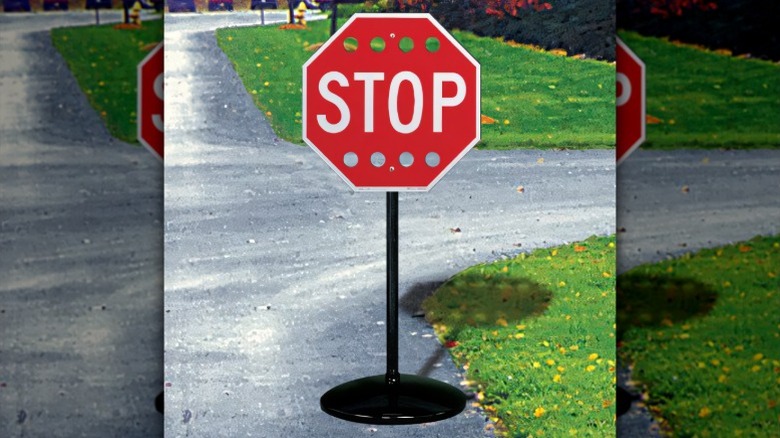Why Are Some Stop Signs Blue? Here's What It Means
Road signage is everywhere, informing us of speed limits, school zones, and pedestrian crossings, to name a few. These highly visible notices along roadways help organize what would otherwise be utter chaos. But there is one particular sign you may not have seen — or if you have, were probably left puzzled by: the blue stop sign.
Blue stop signs aren't issued by the U.S. Department of Transportation and don't appear on public roads. Instead, these unique signs are often purchased for private property where certain areas might necessitate a driver to stop, such as a situation where there is a hidden obstacle or drop-off.
You might be wondering why you haven't seen these blue stop signs before in the U.S., and the answer is simply that you haven't visited Hawaii, which is the state in which they're most common. So, as puzzling as the blue stop sign first appears, it's nothing compared to the most confusing traffic signs out there, some of which you've probably already encountered.
Stop signs weren't always red
The early 1900s saw the rise of the automobile, backed by Henry Ford, the man behind America's first major automotive giant. However, an organized and consistent system of road signs didn't magically emerge once people started driving. On the contrary, it was a process that went through some growing pains over the years before a nationwide universal system of symbols and colors helped direct traffic.
The very first stop sign was installed in Detroit, Michigan, in 1915. It took the form of a white square with "stop" written in black lettering. However, in the 1920s, the American Association of State Highway Officials (AASHO) saw yellow as an ideal color to indicate a driver should stop, due to its enhanced visibility. The color red was originally abandoned because it couldn't be seen as well during the evening.
In 1954, the stop sign officially became red with white lettering, and this was due to a few reasons. Firstly, the fact that many signs used yellow could be a bit confusing for motorists; it meant that the stop sign blended in with others. Secondly, pre-1950s red paint would fade dramatically over time, making red signs more difficult to see. But this changed with the introduction of a new paint finish that preserved the bright red coloring.
Some areas are putting holes in their stop signs
As if the color blue weren't strange enough, you may come across a stop sign with large holes drilled into it in some parts of the U.S. These are not the result of someone shooting the sign with a firearm; instead, they're intentionally constructed with perforations to allow some wind through, preventing them getting blown over.
There's some science to back it up, as research has found that adding large holes evenly spaced out is effective at lowering the force of wind against a sign. While it looks a bit strange, it's worth it to help ensure drivers can see important signs, even in the windiest of locales. These holey stop signs aren't the only strange ones out there, although some aren't going to be around much longer — such as the state of Pennsylvania's funny road signs, which are about to be banned.


